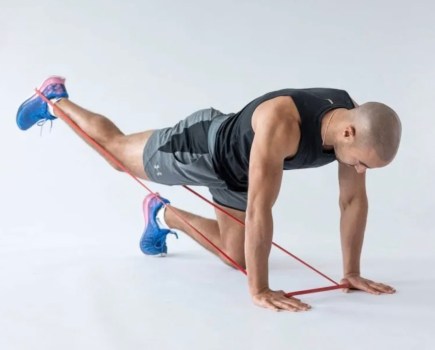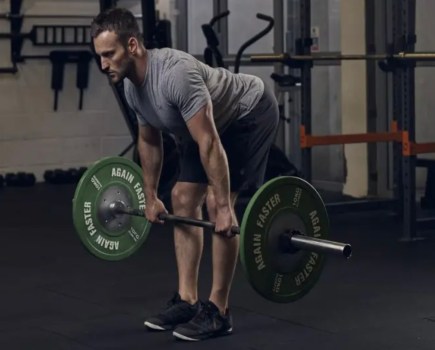Forge total-body strength and stability – and protect yourself against injury – with this one often mishandled move. PT Dan Fallon shows you how.
What If I told you there was one exercise that takes just ten minutes a day and builds superhuman strength across your entire body? All you need to do is grab your best kettlebell and perform the Turkish get-up.
The Turkish get-up (TGU) is the daddy of all exercises when it comes to hitting full-body strength, flexibility and coordination. Yet it’s an exercise often butchered in the gym because men don’t give it the respect and time needed to cultivate a beautiful TGU.
The aim is to perfect the get-up so that it complements the body, rather than leave it screaming with pain after rushing through it or, even worse, lifting too much load.
Taking your time and breathing slowly in each phase of the TGU enhances the range of motion in areas that often become tight in adulthood (hips and shoulders) and stabilises the joints you need to be safe during your training programme (such as the lower back).
The benefits of taking your time with the TGU, when it comes to mobility and stability of the entire body, are huge.
Aim to complete 5 repetitions each side per day. Each repetition lasts for 45-60 seconds.
Take a deep breath in each pose and really focus on moving your body only when you feel absolutely tight in all the right places.
How to do the perfect Turkish get-up
There are seven phases to get to the top of the TGU before you reverse the order:
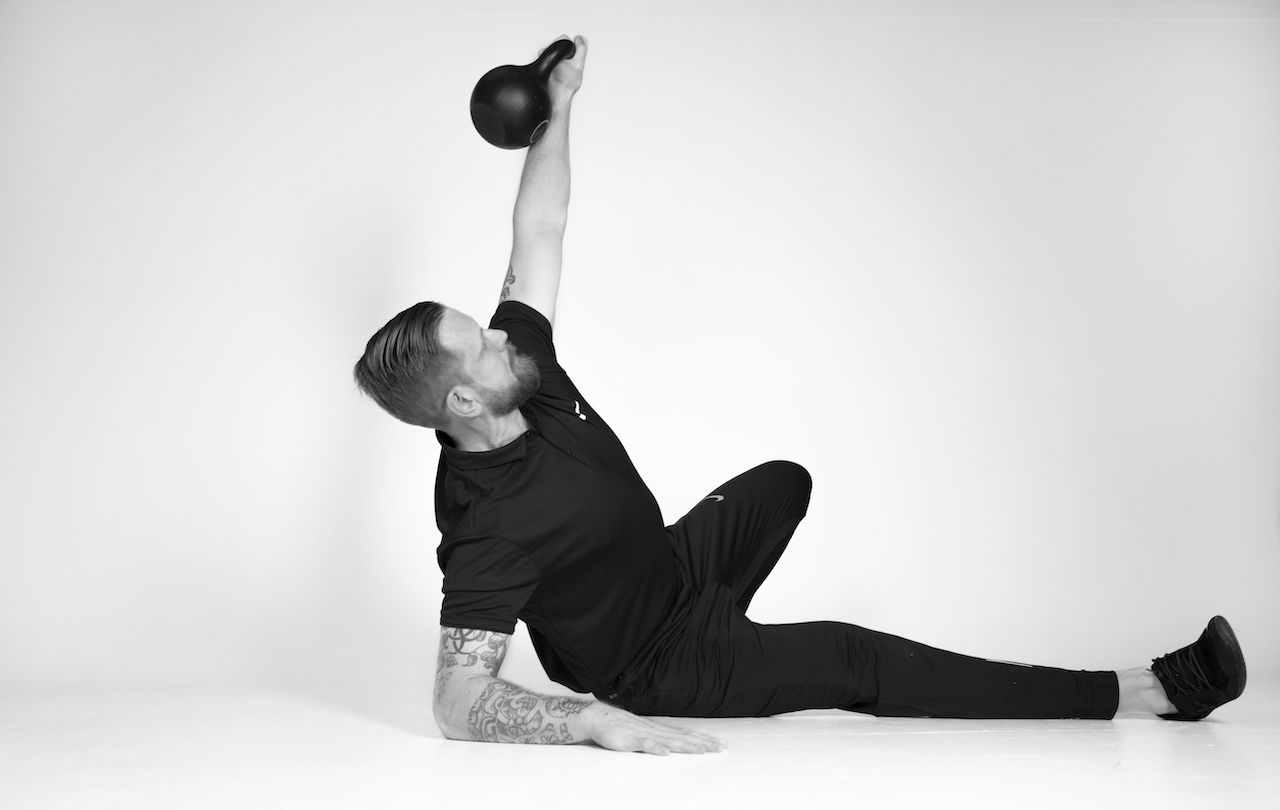
PHASE 1:
The roll
Ensure that you can feel the weight going through your foot, to rotate the body over enough to pull yourself onto the elbow.

PHASE 2:
The half sit
Make sure the shoulders are squeezed together, to prevent them from pointing after you have corkscrewed the arm around.
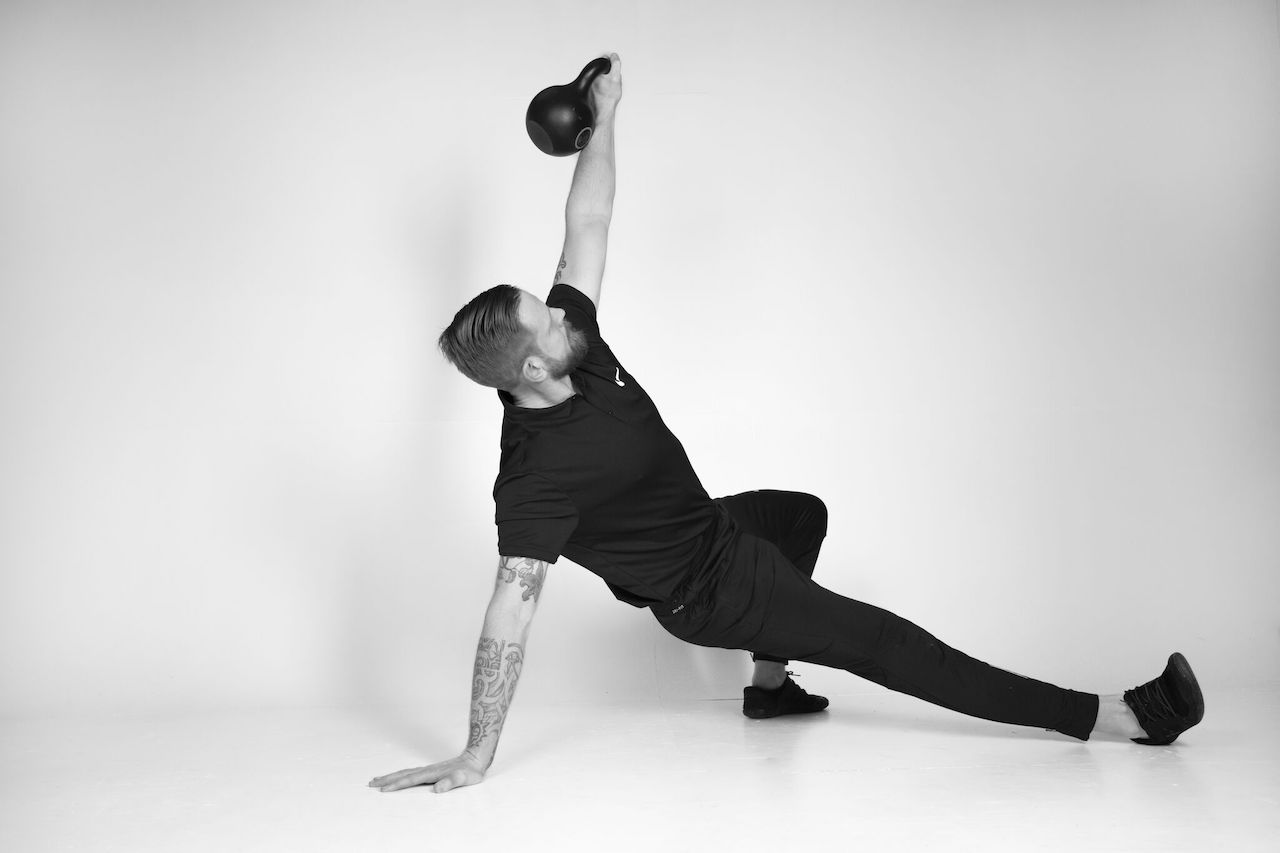
PHASE 3:
The bridge
Ensure you lift up your backside enough to sweep the leg through. Pause in this position to light up the hips.
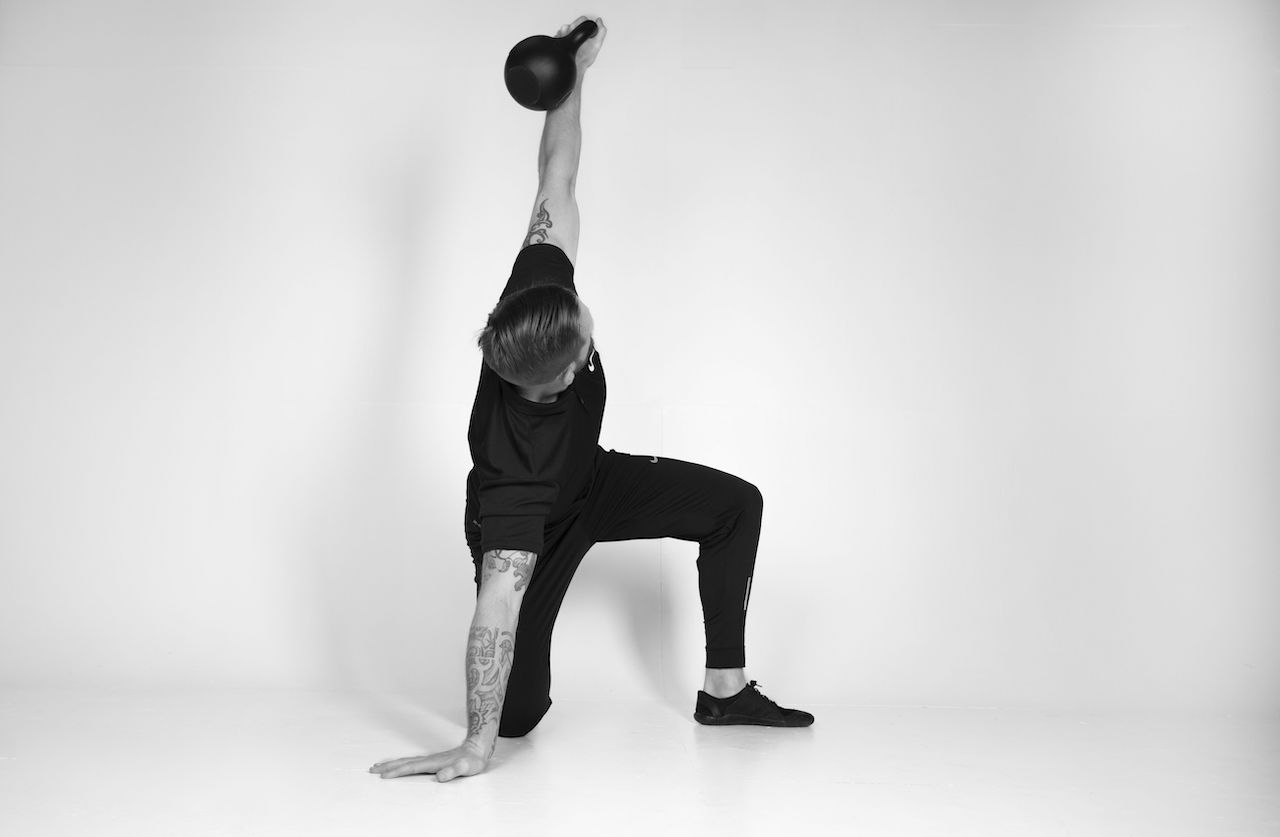
PHASE 4:
The sweep
This is the sexy part of the movement. Make sure you sit deep onto the heel to open the hips and the upper back.
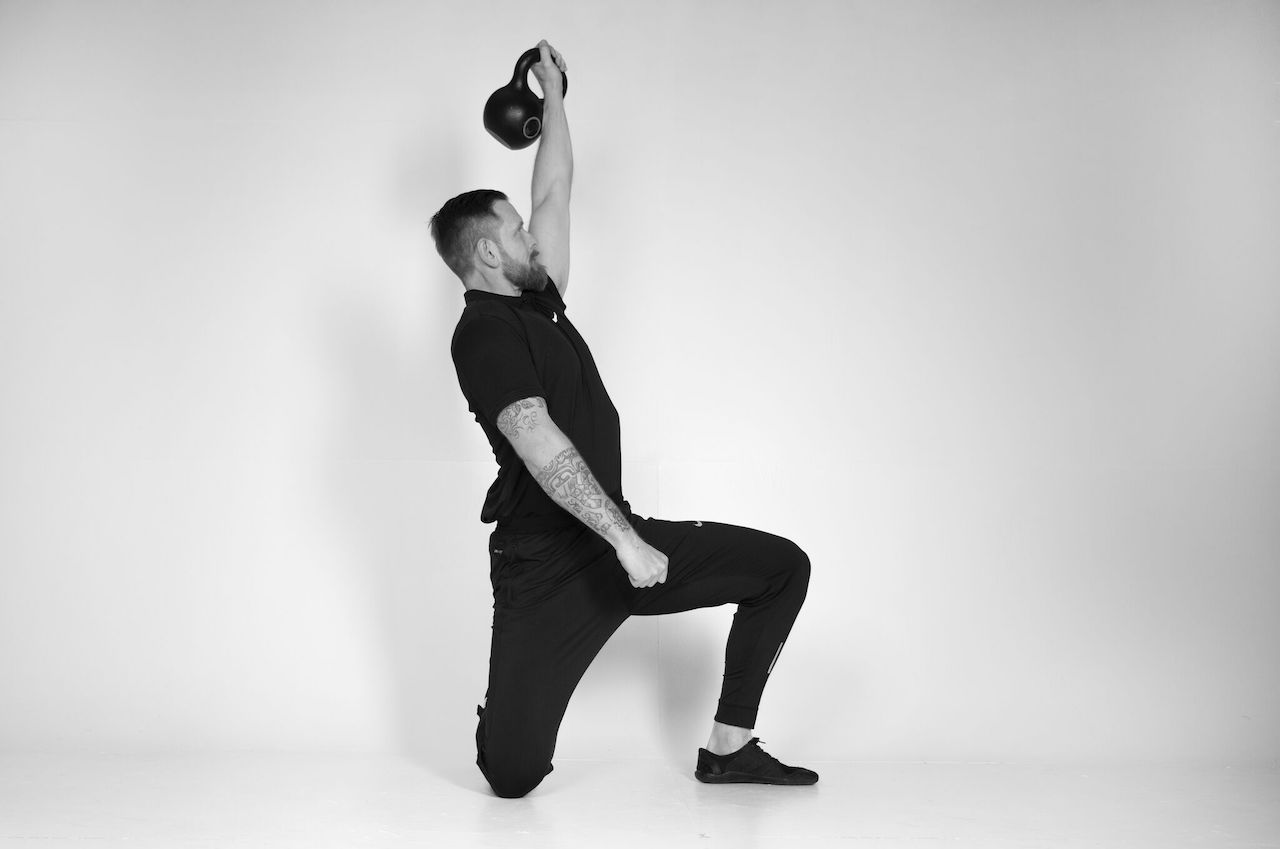
PHASE 5:
The hinge
Ensure you drive with the hips during this motion and not the lateral core (between the hips and rib cage).
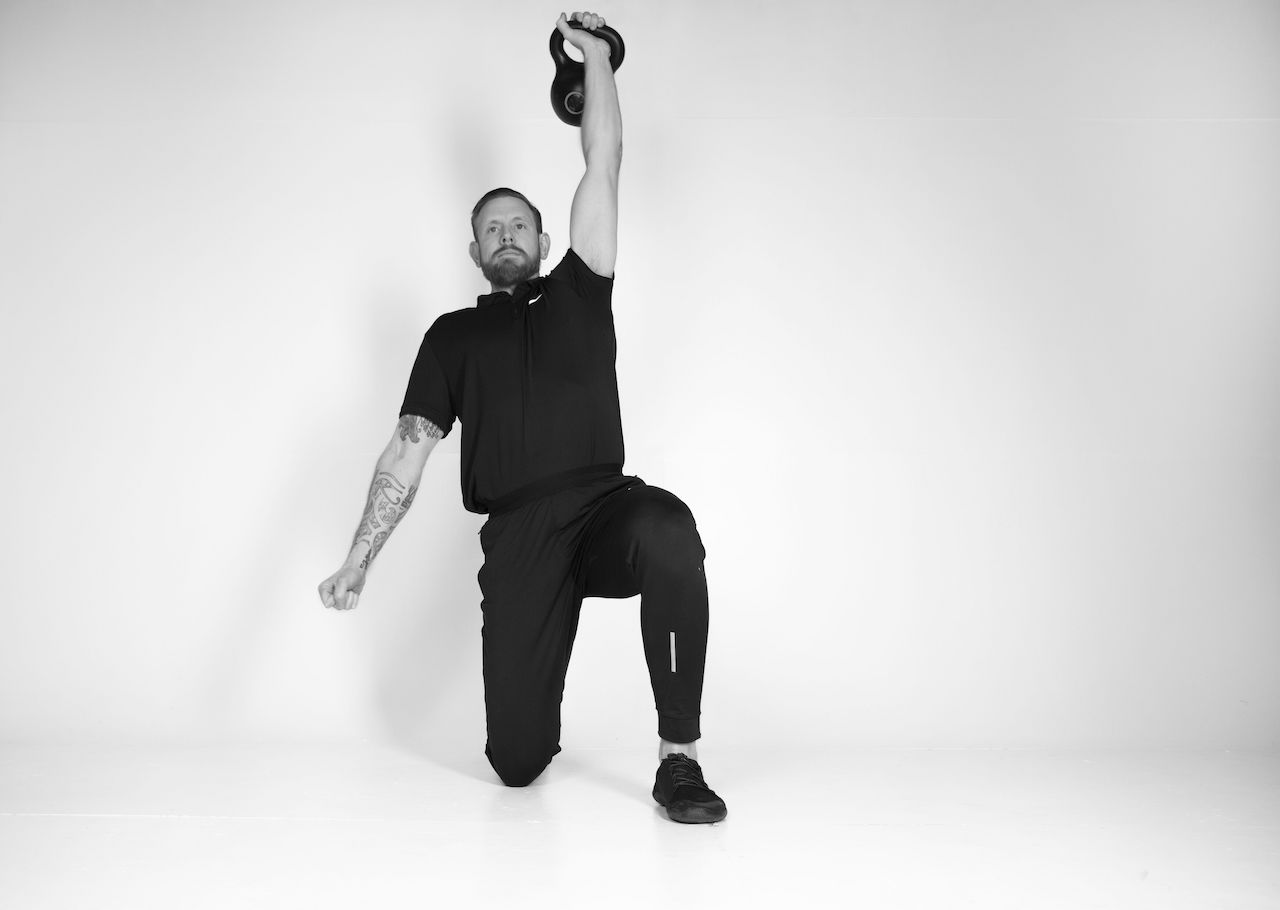
PHASE 6:
The lunge
Once you’ve organised yourself into the front lunge position, brace the core hard to then stand up.

PHASE 7:
The standing plank
During this position, squeeze the buttocks together as hard as possible and flare the rib cage downwards.
Dan Fallon is author of Start with ONE THING: The Dad’s No BS Approach to Fat Loss and Fitness (Rethink Press, £12.99) and founder of the Super You Project, the Dad’s online fitness community facebook.com/superyouproject
Related content:





